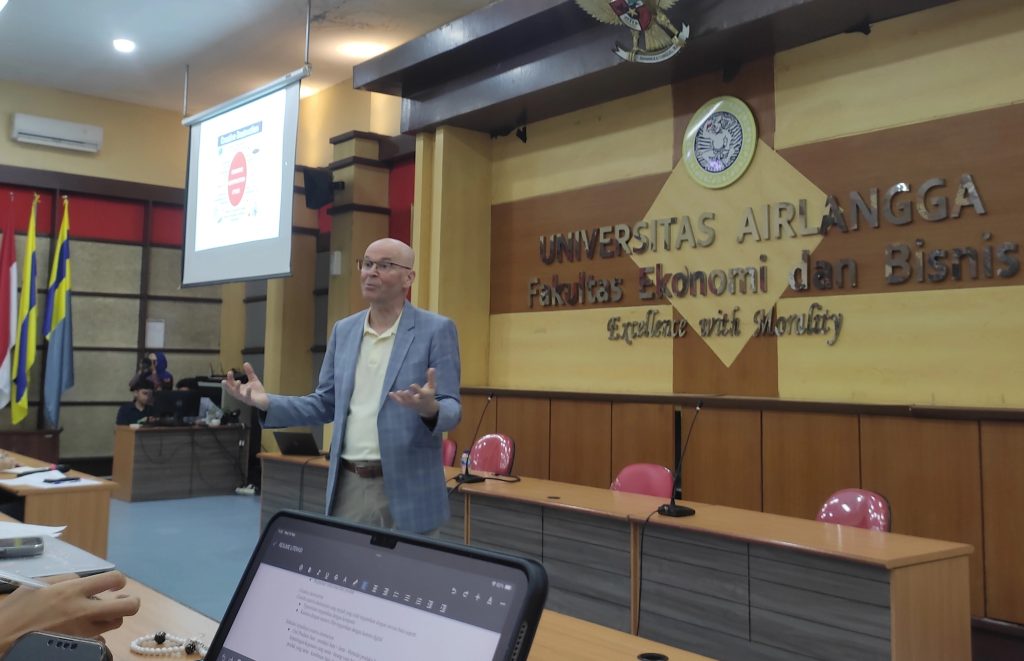UNAIR NEWS – The Department of Economics at Faculty of Economics and Business (FEB), Universitas Airlangga (UNAIR), hosted a guest lecture on Wednesday (March 12, 2025) at Miendrowo Hall, located on the fourth floor of the FEB Main Building, Dharmawangsa-B Campus. The session provided students with an in-depth understanding of Schumpeter’s Theory of Disruptive Innovation and its relevance in today’s rapidly evolving digital landscape.
The lecture featured Professor Roman Matousek, a renowned scholar in Financial Economics from the School of Business and Management at Queen Mary University of London. With expertise in financial innovation, banking and international finance, monetary economics, development finance, and corporate finance, Prof. Matousek offered valuable insights into the economic forces shaping modern industries.
The session explored how technological advancements redefine industries, the role of entrepreneurs in driving innovation, and the economic consequences of disruptive change. It highlighted how emerging innovations create new markets while simultaneously rendering existing ones obsolete.
Disruptive Innovation and its impact on digital landscape
Each year, businesses race to innovate to maintain their competitive edge and dominate the market. A striking example is Nokia, once the global leader in mobile phones during the early 2000s. However, its failure to adapt to changing technology led to its decline, while companies like Samsung and Huawei continued to thrive by consistently pushing technological boundaries and introducing cutting-edge innovations.
Schumpeter’s theory asserts that technological advancements inevitably replace outdated systems. For example, smartphones have replaced traditional mobile phones, while email has rendered fax machines nearly obsolete. In the era of Industry 4.0, rapid progress in computing and artificial intelligence (AI) is driving transformative changes across multiple sectors. Innovation manifests in various forms, from revolutionary products and more efficient production techniques to market expansions and shifts in industry structures. This “creative destruction” is a fundamental driver of economic progress.
A prime example is China, which was once known for imitating foreign technologies but has since emerged as a global leader in industrial innovation, particularly in the automotive sector. While technological advancements foster competition and benefit consumers, they also present significant challenges. To remain relevant in an increasingly digital future, businesses and individuals must embrace emerging technologies such as blockchain.
“Innovation is the key for entrepreneurs to compete and gain an advantage in the market. It fuels economic growth, reshapes industries, and strengthens competition,” Professor Roman Matousek concluded.
Author: Kania Khansanadhifa Kallista
Editor: Ragil Kukuh Imanto









